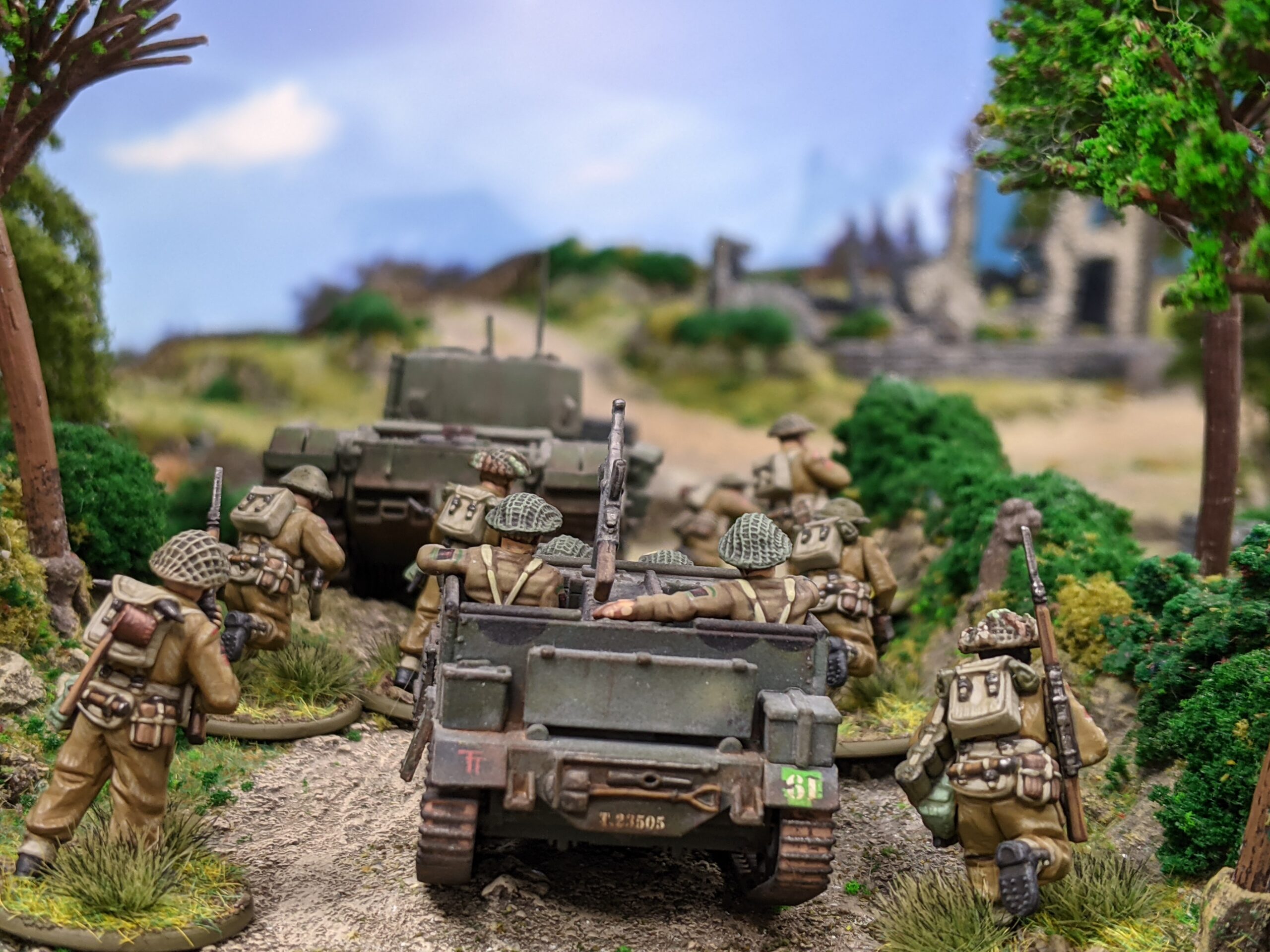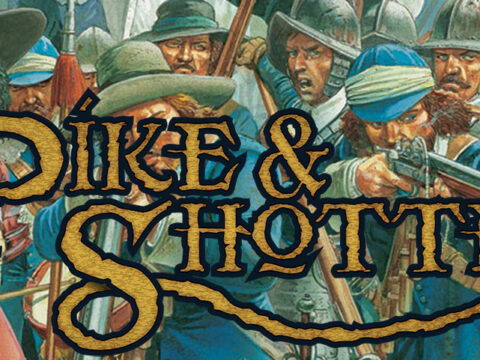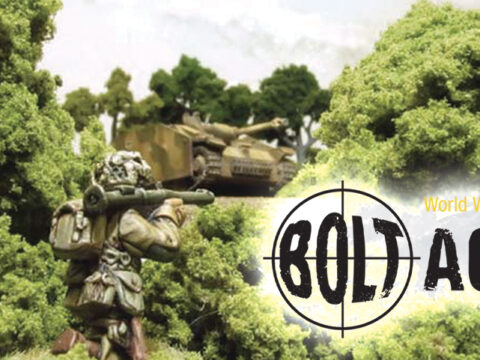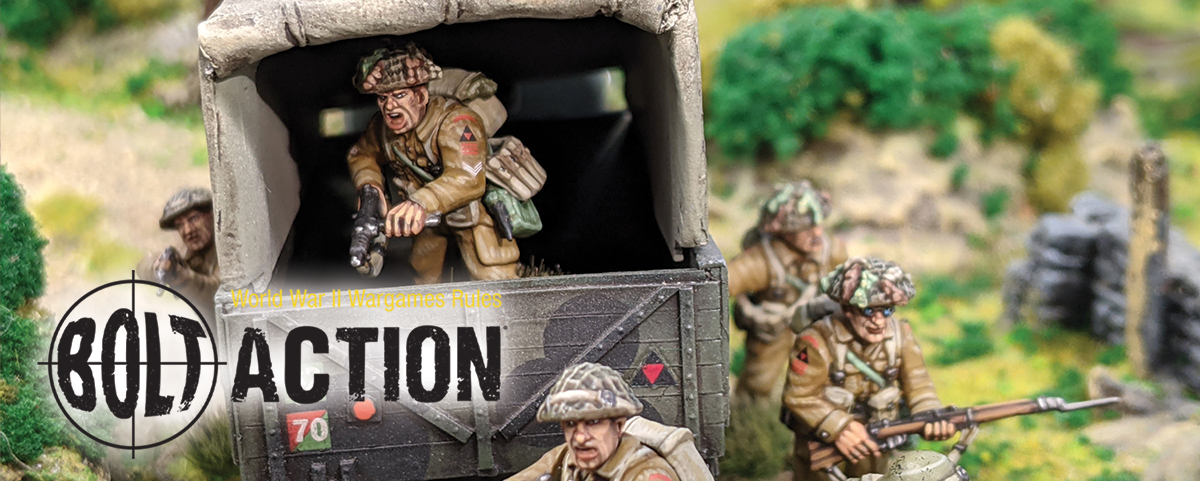
To stem the aggression from Germany, Italy and Japan, Britain and her Commonwealth put huge numbers of men into uniform in WWII. Her small but professional army was swallowed up defending a worldwide Empire and soon her forces were shattered and in full retreat, culminating in crushing reverses at Dunkirk and in Singapore. However, Britain stoically declined to surrender and her army was reforged, fighting back against the might of the Axis powers. The Tommies, as they were known, learned new techniques on the field of battles and by war’s end were a highly effective fighting force having fought from the opening of hostilities in 1939 to the war’s end in 1945.
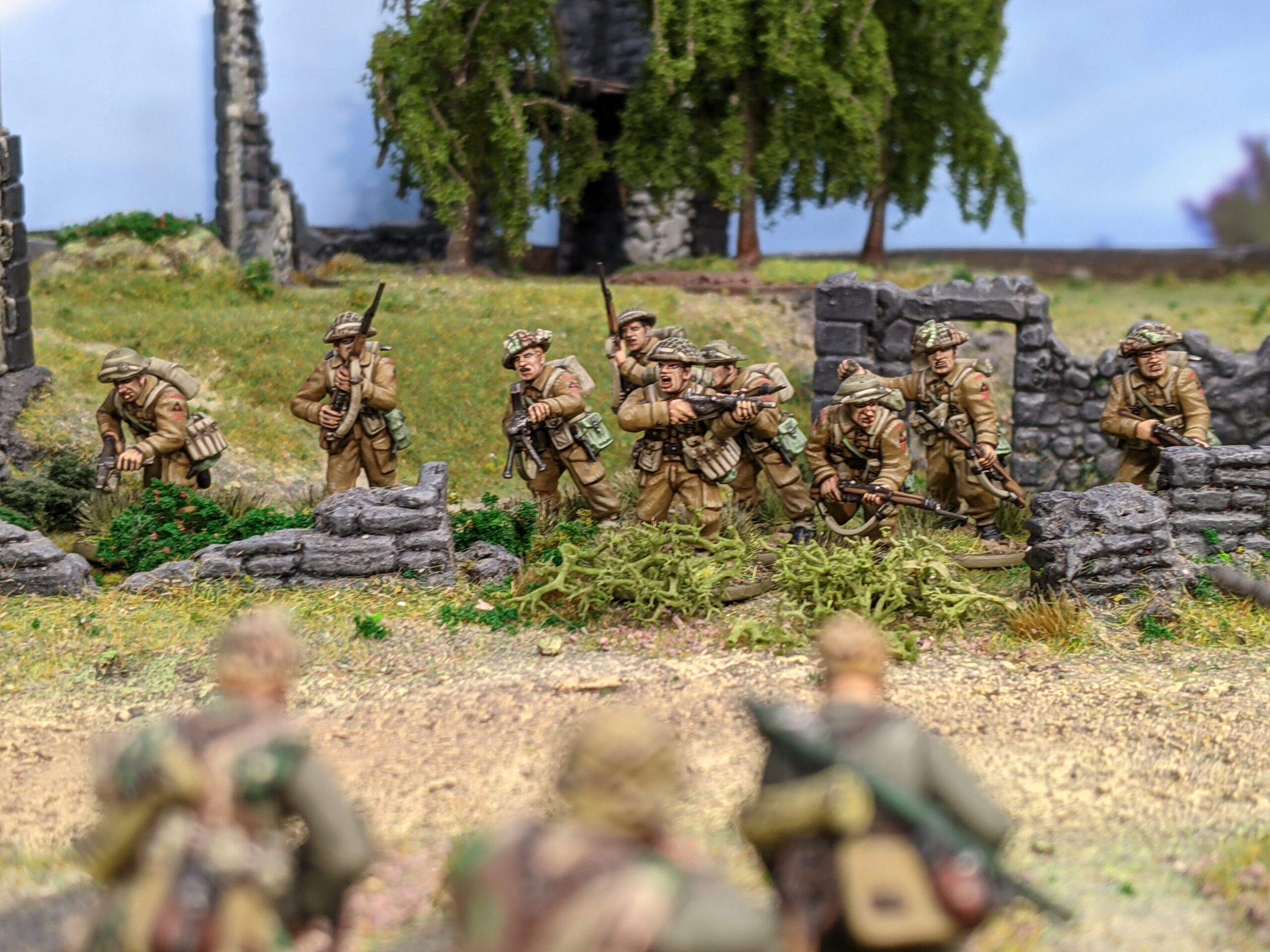
A British infantry squad was referred to as a section. It normally consisted of ten men and was divided into a separate rifle group and Bren group. Each section was led by a corporal armed with a rifle or pistol and included a lance corporal who was in charge of the Bren group. All the section members apart from the corporal carried ammunition for the Bren – 700 rounds in 25 magazines in all. In addition, all men carried grenades.
As the war progressed, additional weaponry was acquired. The section leader and/or second in command would be issued with Thompson or Sten submachine guns (though these were sometimes quietly ‘lost’ to avoid making themselves obvious targets for snipers). Late in the war a second Bren was added to many Veteran sections, whether this was officially part of their issue or not.
Canadian infantry sections were organised in the same way as their British counterparts. From 1943–45, due to the Canadian practice of employing MMGs and HMGs on Universal Carriers, spare Bren guns also became available to some infantry sections. All three Canadian infantry divisions were trained to conduct amphibious landing operations. Canadians participated in landings at Dieppe, Sicily, Italy, Normandy, the Breskens Pocket and the Rhine crossing. 3rd Canadian Infantry Division conducted so many amphibious assaults they earned the nickname ‘The Water Rats’ from Field Marshal Montgomery.
The New Kit
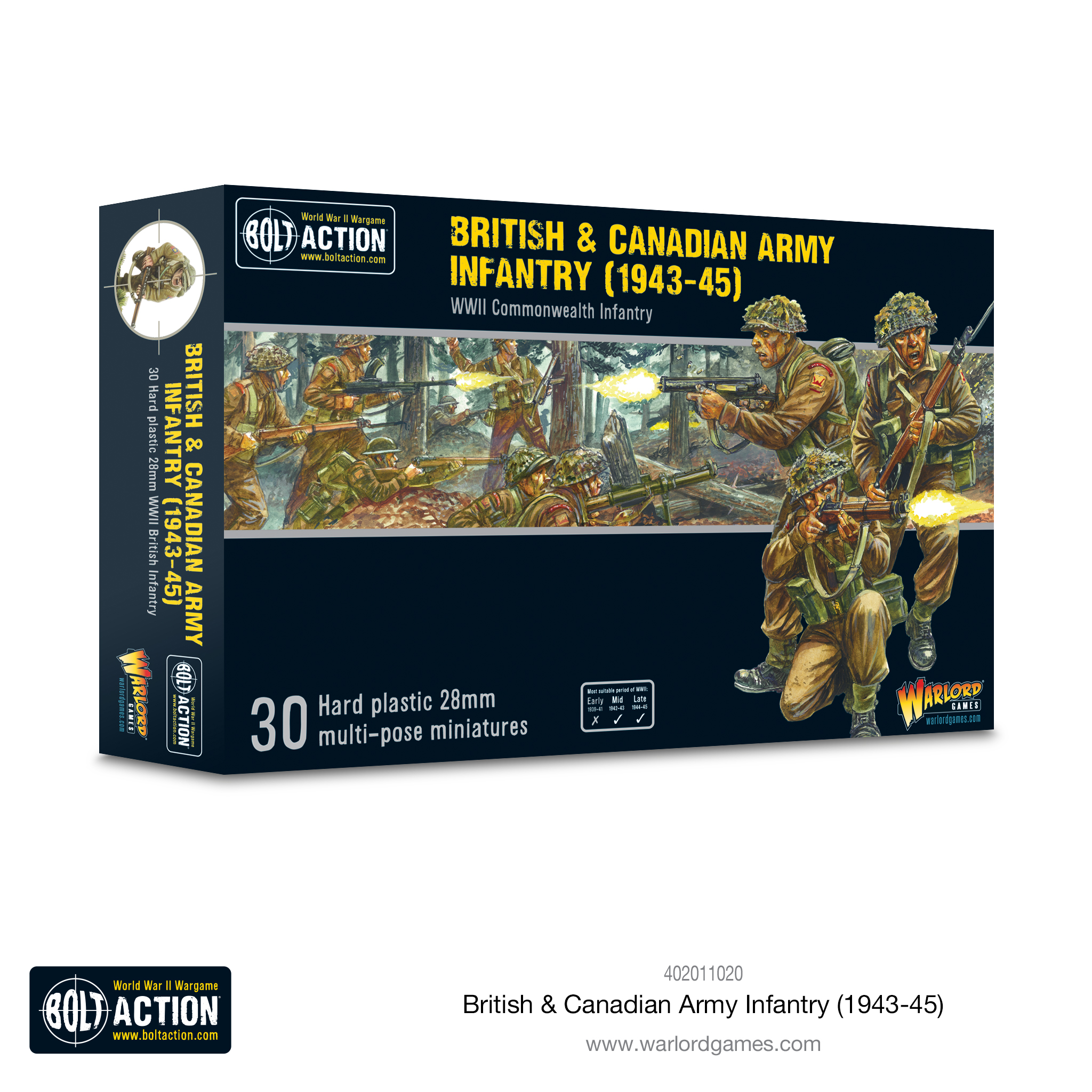
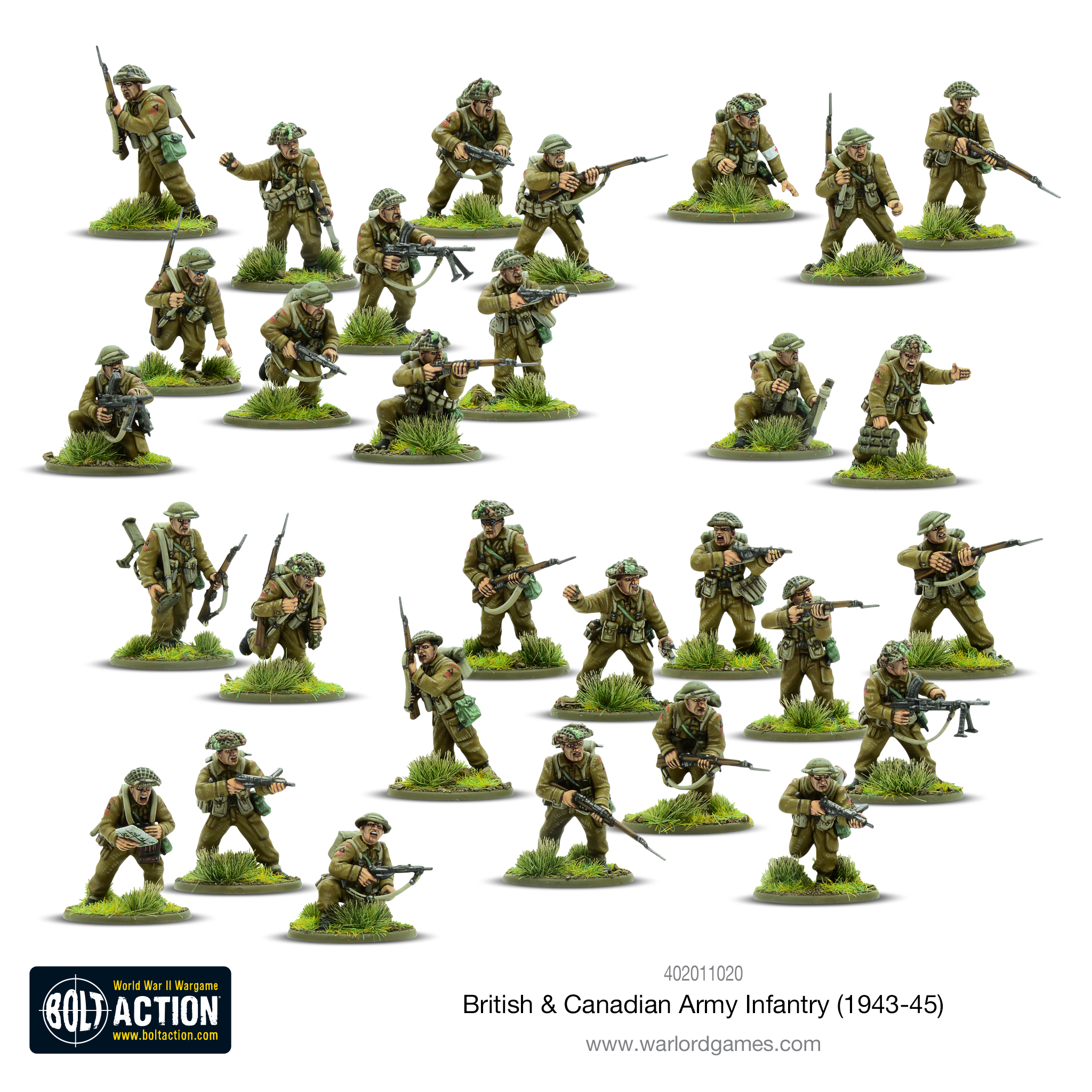
The new plastic kit for the British and Canadians is fantastically detailed and allows for myriad customization options. Our customer service boffins worked out that there are a possible 396 variations that can be made BEFORE the consideration of optional heads and additional accessories such as maps, waving arms and binoculars.
The sprue is packed with optional extras, with head options for steel helmets, assault helmets and Tam o’shanter caps (for Scottish or Canadian troops), as well as weapons including: Lee Enfield No 4 rifle, Bren light machine gun, Sten sub-machine gun, 2-inch light mortar, PIAT anti-tank projector, Webley service revolver and Mills Bombs, additional accessories and command options. Just take a look at the box insert!
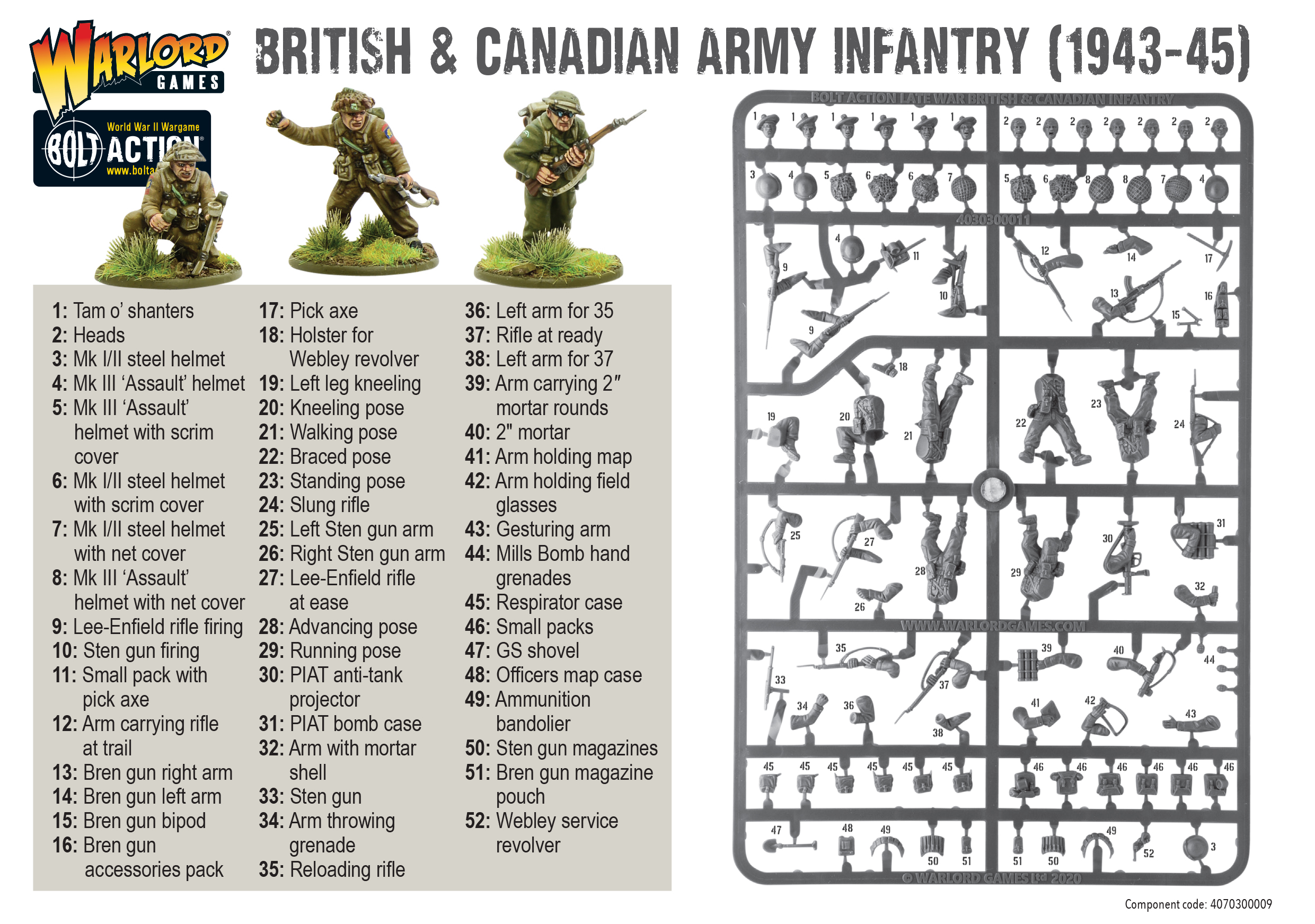
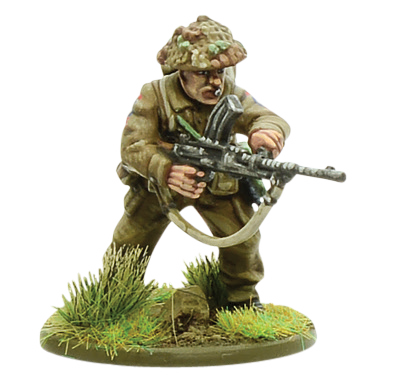
The British and Canadian infantry section was built around the firepower of the Bren gun, with each soldier carrying additional ammunition magazines.
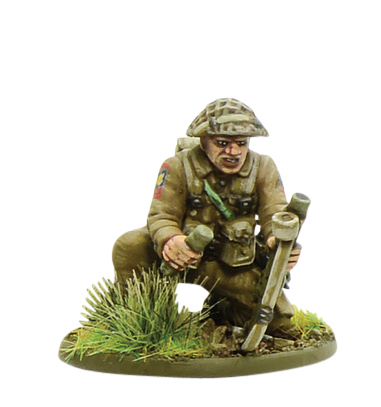
With longer range and greater firepower than rifle grenades, the 2″ mortar provided welcome support – be it in suppressing fire or laying smoke screens.
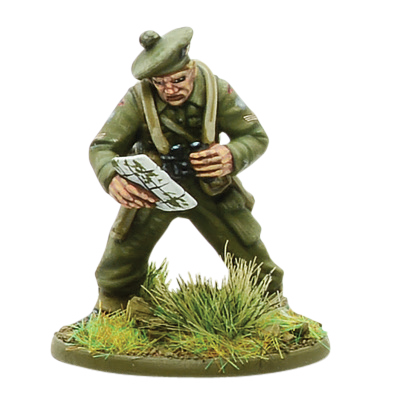
The tam o’ shanter bonnet is ideal to represent Scottish or Scots-Canadian regiments. Some officers would also favour this headgear.
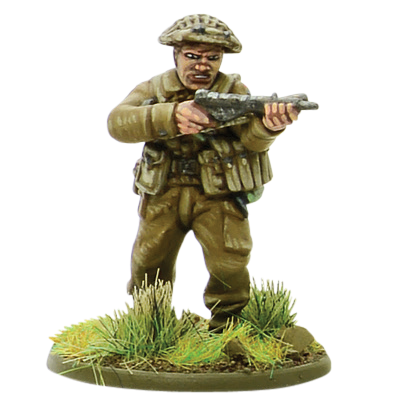
Fearsomely loud and cheap to make, the Sten gun was the workhorse sub-machine gun of the British army.
